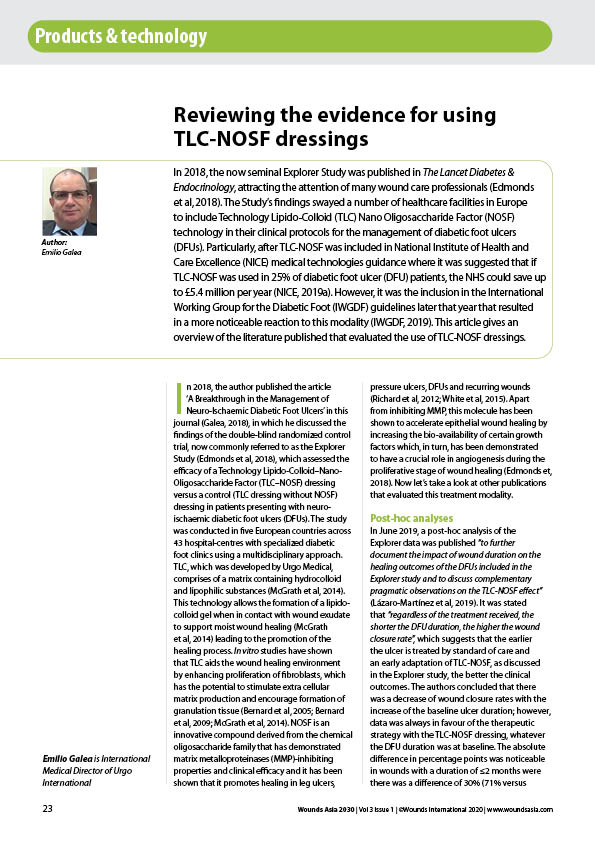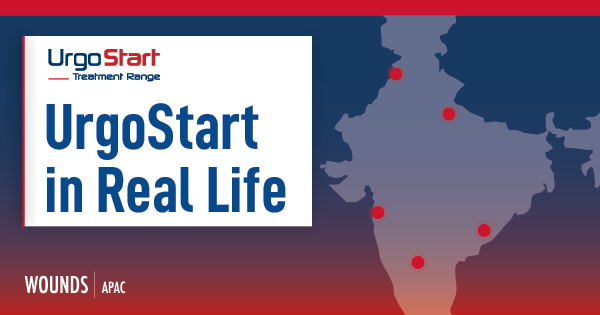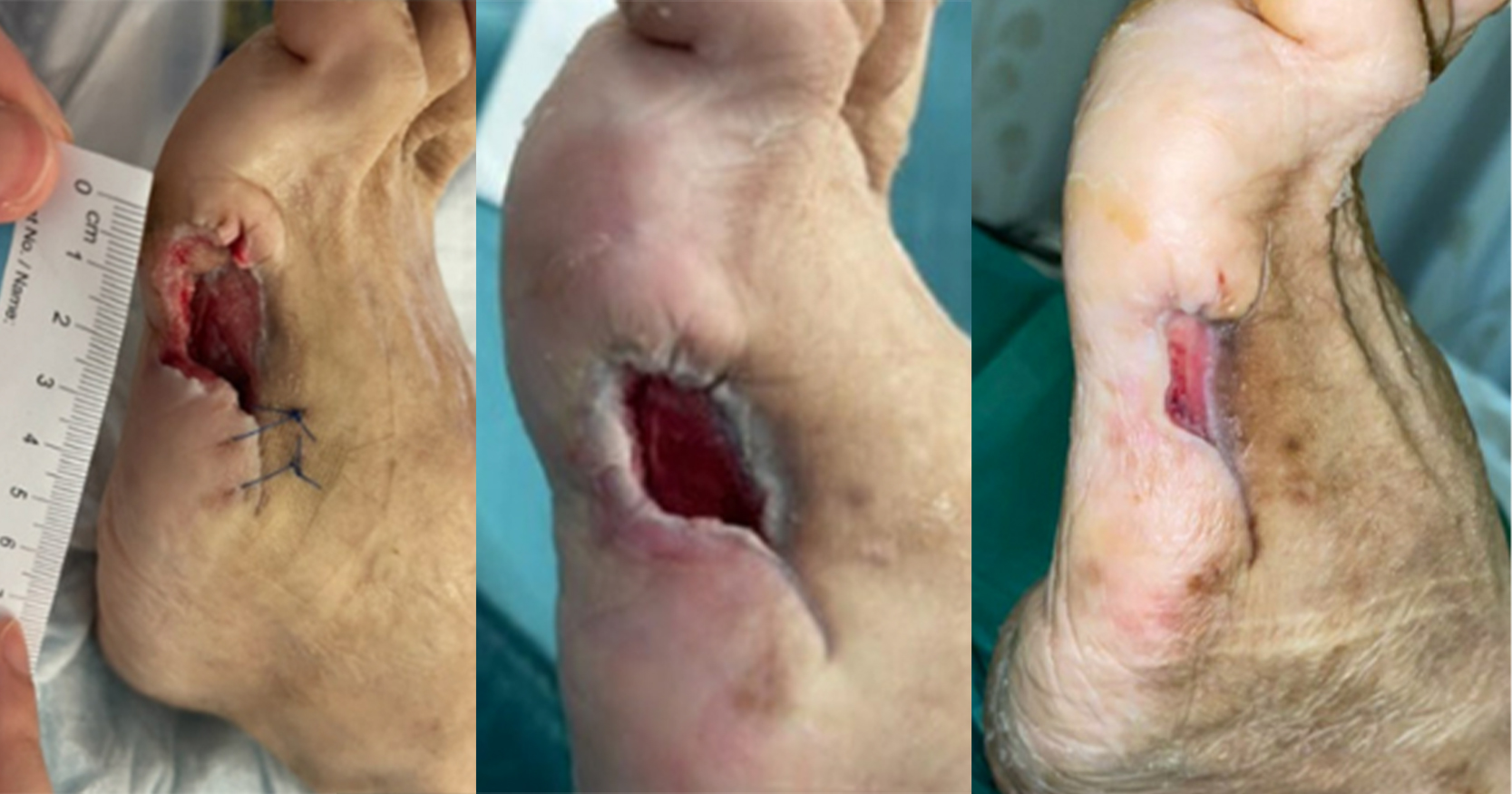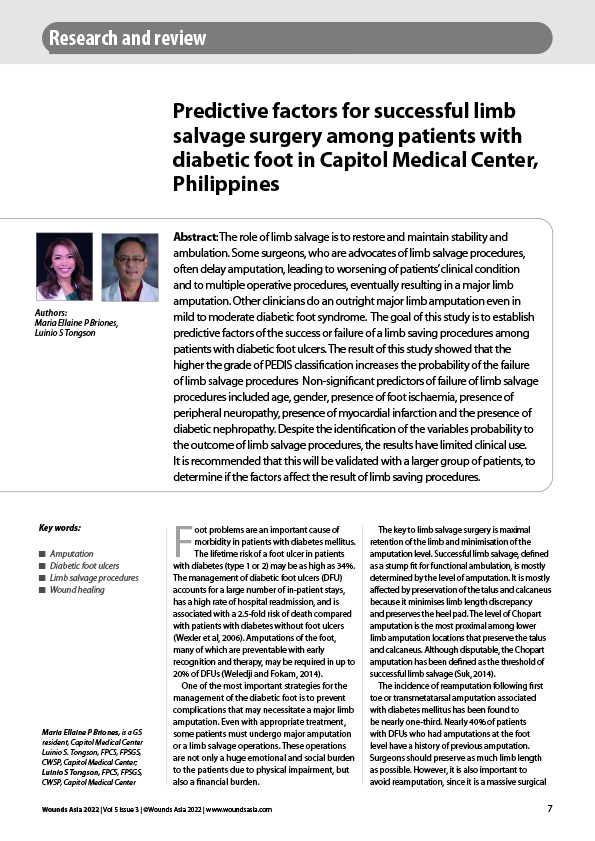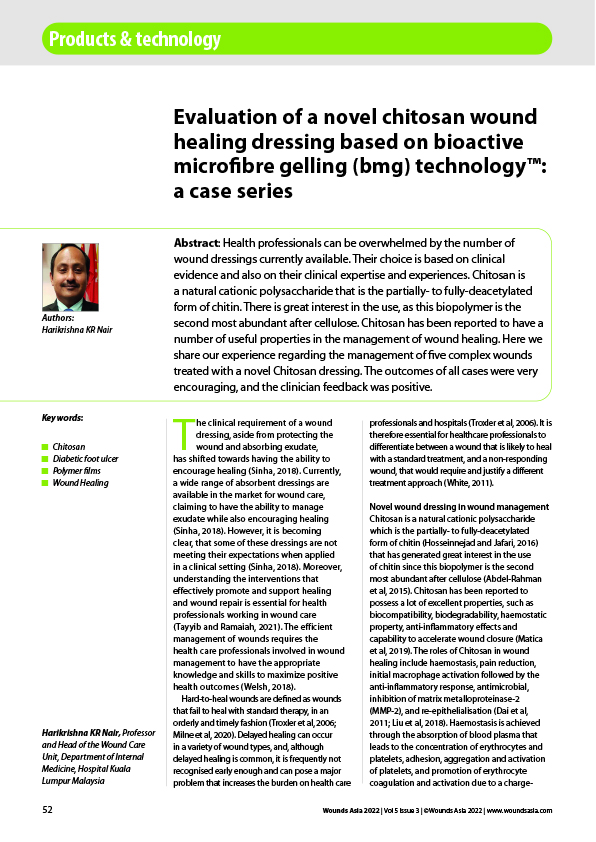In 2018, the now seminal Explorer Study was published in The Lancet Diabetes & Endocrinology, attracting the attention of many wound care professionals (Edmonds et al, 2018). The study’s findings swayed a number of healthcare facilities in Europe to include Technology Lipido-Colloid (TLC) Nano Oligosaccharide Factor (NOSF) technology in their clinical protocols for the management of diabetic foot ulcers (DFUs). Particularly, after TLC-NOSF was included in National Institute of Health and Care Excellence (NICE) medical technologies guidance, where it was suggested that if TLC-NOSF was used in 25% of diabetic foot ulcer (DFU) patients, the NHS could save up to £5.4 million per year (NICE, 2019a). However, it was the inclusion in the International Working Group for the Diabetic Foot (IWGDF) guidelines later that year that resulted in a more noticeable reaction to this modality (IWGDF, 2019). This article gives an overview of the literature published that evaluated the use of TLC-NOSF dressings.

